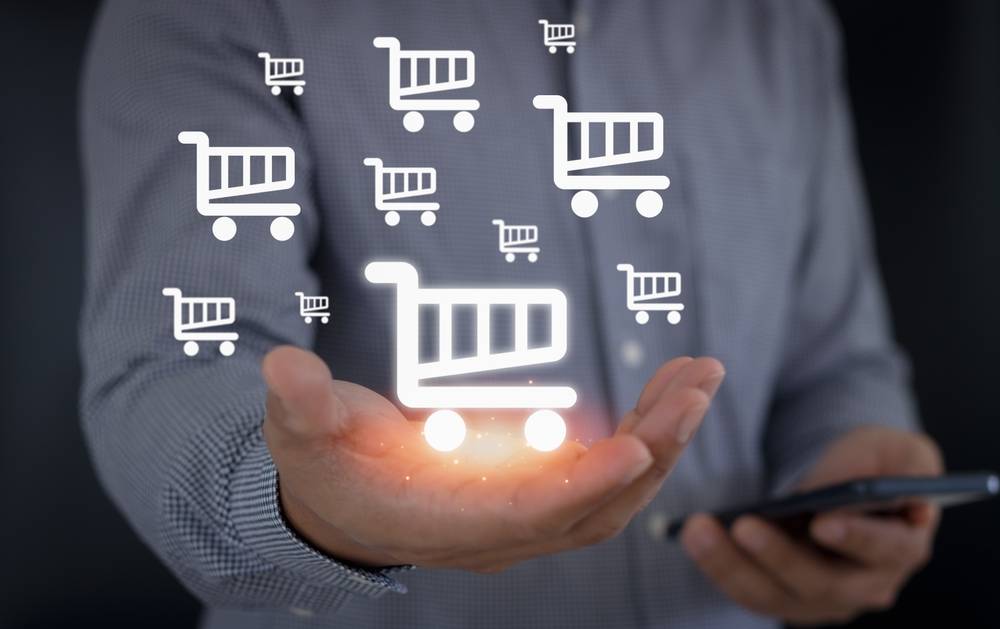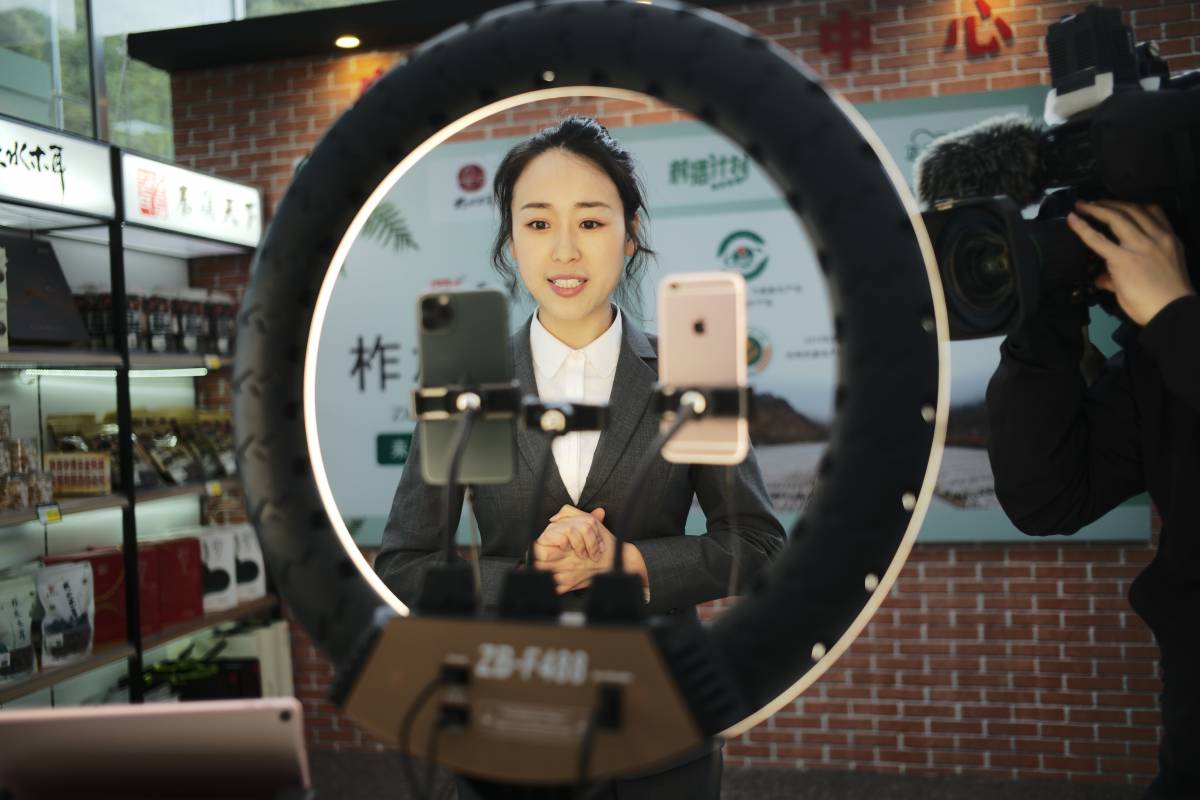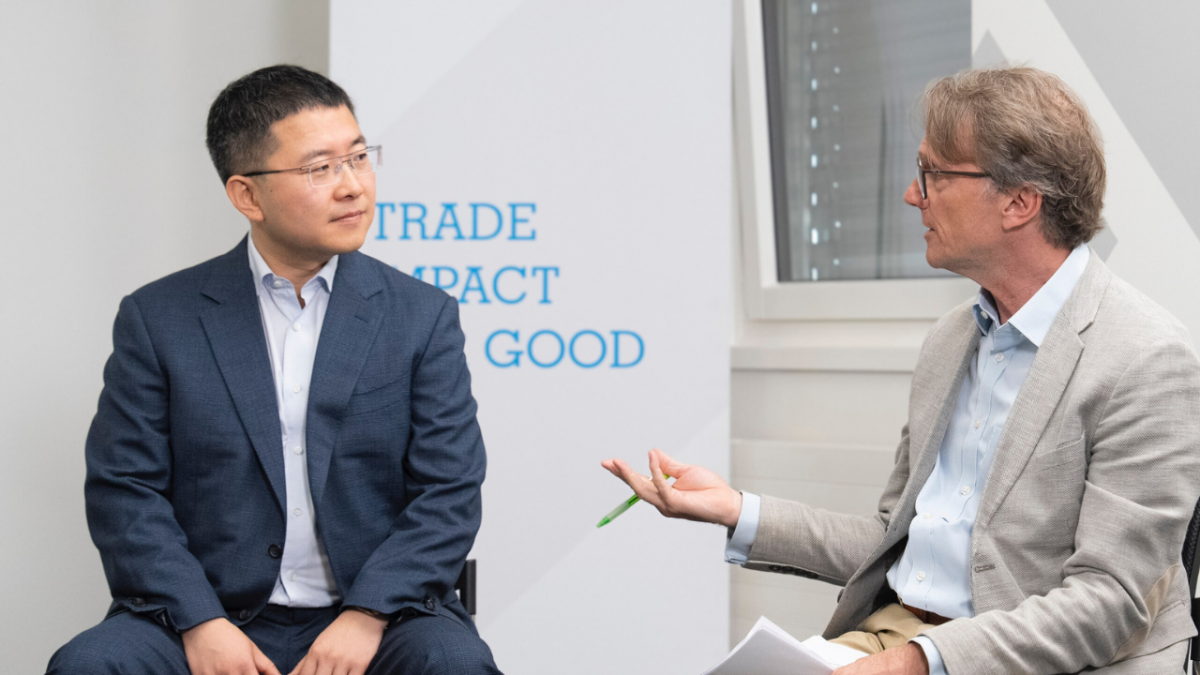


Listen and follow Alicast
Advances in artificial intelligence is one of the biggest factors set to shape e-commerce in 2024.
As shoppers increasingly lean on generative AI to answer questions and refine their searches, they will expect merchants, brands and marketplaces to keep pace, says Euromonitor International in their outlook for the year ahead.
In this episode of Alicast, join Alizila’s Managing Editor, Alison Tudor-Ackroyd, as she asks Hong Kong-based Herbert Yum, a Research Manager at consultancy Euromonitor International, how he sees changes in technology and consumer behavior impacting retailers.
With Yum’s decade of experience in the consumer industry, he brings valuable expertise to the discussion.
Tune in to this conversation to learn what’s in store for e-commerce in 2024, the Lunar New Year of the Wood Dragon, and beyond!
Below is a transcript of this Alicast, edited for clarity and brevity
Alison Tudor-Ackroyd:
Today, we’re joined by Euromonitor’s APAC research manager, Herbert Young, to talk about the biggest trends in e-commerce to watch out for in 2024. Euromonitor, as I’m sure you’re all aware, is a market analysis provider and Herbert is based in Hong Kong with over a decade of experience in consumer research.
Herbert, thank you so much for joining us on Alicast.
Herbert Yum:
Thank you for inviting me. Glad to be on the show.
Alison Tudor-Ackroyd:
What was the biggest trend that emerged in 2023 that will continue to shape e-commerce into 2024?
Herbert Yum:
Yes, so that’s a very good question. Of all the many trends that we observe, I believe the generative AI trend, what we call “Ask AI”, is definitely the key trend I believe is shaping consumer behavior this year and beyond.
With the launch of ChatGPT in late 2022, early 2023, the adoption, not only for companies but also for consumers, has changed consumer behavior across the globe. ChatGPT is more a way for consumers to aggregate information available online and then simply ask whatever question they want and then ChatGPT, the language model will help come up with the answer, it might not be 100% accurate, but at least it saves the consumer time.
And why it is relevant to e-commerce? It’s easy for me to understand what product is available in offline retail shops. I can just walk around the shop once, and then I know what product I can buy. But for e-commerce, there are hundreds of e-commerce sites online. Each of them has slightly different positioning, and I need to surf many websites to find whether I can find a better value of the product that I want — it’s a very time-consuming process, way more time than I need to shop in an offline store.
Alibaba is definitely one of the first movers in China and Wenwen is a very powerful tool.
So, AI is something that will definitely shape the industry this year and in the future.
Alison Tudor-Ackroyd:
As you have written at Euromonitor, consumers are using AI and asking AI in their everyday lives, so, they expect brands, merchants and their shopping experience to keep pace.
Herbert Yum:
Yes, definitely, because consumers nowadays are really demanding. They are not necessarily demanding something cheap, they’re looking for something that’s worth the value. Especially, as we know in Greater China, and this also applies to Western Europe, the overall economic condition is not that good. So, people are thinking, okay, with the same amount of money, how can I spend it smartly?
They rely on different kinds of tools to help them to justify their buying decision, so AI is therefore very influential in terms of consumer decision-making.
Alison Tudor-Ackroyd:
Now that’s interesting because merchants often think that this value-for-money seeking behavior and conservative consumer means that they have to offer massive discounts, but what you are talking about is finessing the consumer journey and allowing them to discover what they really want, what they see as value for money.
Herbert Yum:
Yes, that’s true because we need to admit that many merchants across the world have taken advantage of the information asymmetry between themselves and consumers. Some e-commerce companies offer the same product at a different price in different areas. Now this is something that consumers across the world are a bit skeptical about. Why are we paying a higher value for the same product?
ChatGPT-2.0 is a tool that helps consumers search for the best offer across different sites. It is a very interesting time for merchants as they need to rethink why are we charging a different price compared to our competitors? Is it because there’s something wrong with our business model? Our value chain operation? Or is it because our product is truly different from others, if so, we need to explain that to our customers.
So that will be the key challenge for every merchant to face this year and next as well.
If you want a more well-established market where consumers are mature, technology is more advanced, everyone has a rich experience in handling these different types of services and products ~ consider China
Alison Tudor-Ackroyd:
We’ve explored the consumer journey side of generative AI, but what about for content creators and for the wholesale side? In Alibaba’s world, that would be alibaba.com.
Herbert Yum:
Well, definitely for content creation, this might not be such a big thing in some of the English-speaking markets because maybe they have less of a barrier in terms of language. But for China, this is a big issue.
If we look back over the past decade, there have been some interesting news saying that the translation in China is not really accurate. This has been because they didn’t have a tool that could help people less proficient in English to translate the product content correctly. ChatGPT is definitely the perfect tool for merchants to use now, it saves them time, saves them money, and can help them to deliver their product message accurately.
Alison Tudor-Ackroyd:
On AliExpress, which is our international platform, bringing Chinese suppliers, merchants to the world, they have just launched a suite of AI tools called Aidge, helping merchants with those kind of pain points that you’re talking about.
Herbert, looking back at the start of 2023, a lot of China pundits were really bullish on economic growth, and the rebound after the pandemic, but as the year progressed, they became disappointed with the sluggish return and cautiousness of the Chinese consumer.
Looking ahead at 2024, do you think that there will be a rebound?
Herbert Yum:
We need to admit that the fastest-growing phase of China has passed, not because China is not growing, but because China is growing at a more normalized pace as the second-largest economy of the world.
Are we going to expect China to grow as fast as other less-developed markets? We shouldn’t have this kind of expectation. So therefore, let’s say using the e-commerce festival as an example this year, many people are trying to compare Diwali to Black Friday and Double 11.
Are you asking why India’s growth is faster than China’s? Because they are different economies at different stages of development.
For merchants, as they set their strategic business plans in China, they need to be realistic in terms of what they expect to set a growth target for China. If they want something that has a very high growth rate that is only applicable in developing markets or emerging markets, go to those markets. If you want a more well-established market where consumers are mature, technology is more advanced, and everyone has a rich experience in handling these different types of services and products — consider China.
Alison Tudor-Ackroyd:
Could you tell us a little bit more about your survey and your latest report for 2024 consumer trends?
Herbert Yum:
Sure thing. So, on the survey side, Euromonitor conducts a consumer survey on a global basis. We will draft a long list of questions targeting different topics. It can be about digital consumer behavior. It can be focusing on the lifestyle of different consumers across the world. And for every survey we generally cover over 30 major economies. And for each of the market, we make sure that it is statistically representative so therefore we make sure that each of the markets have around 1,000 respondents that represent different types of demographic features.
Our latest report, the Global Consumer Trend 2024, spotlights six key trends that we believe will shape the future of consumer behavior. And they are: “Ask AI”, which is a very impactful trend that is influenced by generative AI; the “Delightful Distraction”, which is about the spark of joy that’s needed for consumers for their daily purchases. The fourth is about “Value Hackers”. We all know that over the past few years, lots of things have made us more stressed and different people might embrace different values and cultures.
And last but not least, “Greenwashed Out”. Over the past years, consumers have tried to change their own behavior to make their daily activities more sustainable. Now, they are throwing this question back to companies.
Alison Tudor-Ackroyd:
Taking that last trend first at Alibaba, we are very conscious of that and we’re on our journey to carbon neutrality and we’re making a point of helping the consumer understand their carbon footprint through shopping.
Alibaba Cloud is enabling merchants to measure accurately their carbon emissions during the production of products. Could you tell us a little bit more about this trend?
Herbert Yum:
Yep, sure. When the World Economic Forum throws the agenda out about the sustainable future, everyone, including the leading companies across the world, has a big question: what shall we do? Because even the United Nations, they have 17 SDG goals. It’s a medium to long-term goal.
What you mentioned about measurement, Alibaba is trying to help their customers to understand their carbon emissions, their carbon journey footprint as well as what the small merchants can do to align with this agenda, is definitely a strong plus because this actually tackles one key pain point for many companies?
A company actually asked me a question before: “I have transformed my value supply chain into a sustainable one, but my client doesn’t like it because it actually increased the price of their product.” They had fewer orders after the transformation.
That company asked me: “Why should I invest in sustainability?” My question back was, “Have you talked to your client before you do that investment? Why don’t you talk to them?”
Alibaba is such a great platform for B2B. They actually give them guidelines, the ways to prove or measure your success, and they deliver this message to their customers. So, they are actually aligning interests between stakeholders. That is actually the best win for Alibaba’s strategy. And I would say other companies also need to learn about this, talk align, and do the next step. I would say this is the biggest learning of the sustainable journey.
Alison Tudor-Ackroyd:
Going back to the surprise and delight trend that you mentioned, at Taobao and Tmall Group, they are making a lot of investments in content-led e-commerce.
Taobao Live is really growing, attracting new content creators to its platform and believes that this is what consumers want.
Could you tell us a bit more about what you are seeing?
Herbert Yum:
Sure thing. Yeah. I think you make a very important point about this model because content creation is not necessarily only initiated by the company itself.
Livestreaming, for example, is not only a retail channel, it’s actually a channel for audiences and content creators to connect with each other and deliver what people want. I would say a hybrid model of entertainment as well as a sales platform.
So, the reason why this is so important is because nowadays, we all know that the pandemic, war and lots of stressful events, make us unhappy. So, if I going to spend time on reading some content, why am I going to read something that makes me more stressed, right? Of course, I need to balance, I need to make myself happy.
So, making myself happy does not mean that, okay, I’m going to buy something for free. It actually means that over the purchasing journey, I want some joy.
This is something that livestreamers or online influencers do a very good job of. It could be something that inspires them. I still remember there is a livestreaming broadcaster in China. She’s able to introduce a product within three seconds and then she keeps doing it on and on. It’s like a talent show and someone just criticized, I’m not going to use this influencer because she cannot deliver my product message within three seconds. But to be honest, if we think the whole purpose of this campaign is the influencer trying to deliver the full product spec within three seconds, no. They want to have some performance to attract consumer attention. This is the essence and beauty of livestreaming.
Alibaba livestreaming, of course, has done a very good job. So many live audiences for every single livestream; it’s a great success because they know how to catch the audience’s attention.
Alison Tudor-Ackroyd:
Thank you so much, Herbert, for your insights. That’s been a really insightful conversation. Thank you.
Herbert Yum:
Thank you.
Listen and follow Alicast
Alicast is a production of Alizila, the corporate newsroom of Alibaba. It’s hosted by Alison Tudor-Ackroyd. If you’re in a podcast app already, please follow “Alicast.” If you’re listening on Alizila’s website and want each new episode of “Alicast” delivered to you as they’re published, download any podcast app, then search for “Alicast by Alizila” to follow the show. Thank you for listening, and goodbye for now.







